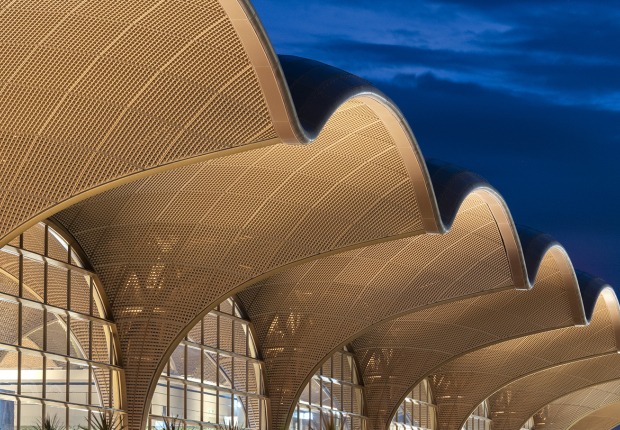Four speakers who reconstruct a story in time.
Rafael Moneo through the revolution of Oriol Bohigas as director of the ETSAB in the convulsions of the 70s; Pere Joan Ravetllat placing the legacy of the architect in the Chair of Projects of this School; Eduardo Mangada recalling the figure of the architect as an ideologue and visionary of the Olympic city at the head of the City Council of Barcelona City Council, and finally Jordi Coca, as the promoter of the network of libraries in Barcelona throughout his term as Councilor of Culture.
It is impossible to follow the traces of the history of modern Catalan architecture without the figure of the architect. Oriol Bohigas (Barcelona, 1925) at the end of his studies in 1951, leads the recovery of modernity silenced by the immediate post-war Franco through his involvement in the birth of Group R. A first stage of which highlights its intense and fruitful exchange With pioneering initiatives such as the reconstruction of the German pavilion of Ludwig Mies van der Rohe in Barcelona (1955).
The 1960s are those of its consolidation as cultural agitator of the architectural reality of the moment. His active collaboration in the magazine Serra d'Or has bequeathed us the origin of a 'realistic architecture' that will be the ideological future of the School of Barcelona, a term he baptized in 1969. As a founding member of the publishing house Edicions 62, Arquitectures Bis (1974-1985), president of the Miró Foundation (1981-1988) and of the Barcelona Athenaeum (2003-2011) and Academician of the Royal Academy of San Fernando, is an intellectual biography drawn from the world of books and The written press.
Search and knowledge engine
The fact that the Library of the ETSAB receives the name of Biblioteca Oriol Bohigas offers UPC the opportunity to reaffirm the power of the book and written culture as an essential vehicle in the construction of architecture and its meaning in time, at the same time Which offers the possibility that part of the legacy of this master architect can be accessible as an engine of research and knowledge for the future. From now on, the Library will have, on the one hand, the 34 volumes that contain all of the writings in the press (1945-2015) that, once digitized, will offer in open a visual atlas unedited written from cuts and Fragments of newspapers.
On the other hand, the donation of the professional library of the architect in the office MBM, will include 91 linear meters (4,000 volumes) between books and magazines specialized in architecture, urbanism and history of the nineteenth and twentieth centuries. A bibliographical background that constitutes a trip through the intellectual geographies of the same architect: Italy, France, England and the United States, as exchanges of a modernity that includes a century of architecture.
Rafael Moneo through the revolution of Oriol Bohigas as director of the ETSAB in the convulsions of the 70s; Pere Joan Ravetllat placing the legacy of the architect in the Chair of Projects of this School; Eduardo Mangada recalling the figure of the architect as an ideologue and visionary of the Olympic city at the head of the City Council of Barcelona City Council, and finally Jordi Coca, as the promoter of the network of libraries in Barcelona throughout his term as Councilor of Culture.
It is impossible to follow the traces of the history of modern Catalan architecture without the figure of the architect. Oriol Bohigas (Barcelona, 1925) at the end of his studies in 1951, leads the recovery of modernity silenced by the immediate post-war Franco through his involvement in the birth of Group R. A first stage of which highlights its intense and fruitful exchange With pioneering initiatives such as the reconstruction of the German pavilion of Ludwig Mies van der Rohe in Barcelona (1955).
The 1960s are those of its consolidation as cultural agitator of the architectural reality of the moment. His active collaboration in the magazine Serra d'Or has bequeathed us the origin of a 'realistic architecture' that will be the ideological future of the School of Barcelona, a term he baptized in 1969. As a founding member of the publishing house Edicions 62, Arquitectures Bis (1974-1985), president of the Miró Foundation (1981-1988) and of the Barcelona Athenaeum (2003-2011) and Academician of the Royal Academy of San Fernando, is an intellectual biography drawn from the world of books and The written press.
Search and knowledge engine
The fact that the Library of the ETSAB receives the name of Biblioteca Oriol Bohigas offers UPC the opportunity to reaffirm the power of the book and written culture as an essential vehicle in the construction of architecture and its meaning in time, at the same time Which offers the possibility that part of the legacy of this master architect can be accessible as an engine of research and knowledge for the future. From now on, the Library will have, on the one hand, the 34 volumes that contain all of the writings in the press (1945-2015) that, once digitized, will offer in open a visual atlas unedited written from cuts and Fragments of newspapers.
On the other hand, the donation of the professional library of the architect in the office MBM, will include 91 linear meters (4,000 volumes) between books and magazines specialized in architecture, urbanism and history of the nineteenth and twentieth centuries. A bibliographical background that constitutes a trip through the intellectual geographies of the same architect: Italy, France, England and the United States, as exchanges of a modernity that includes a century of architecture.






















